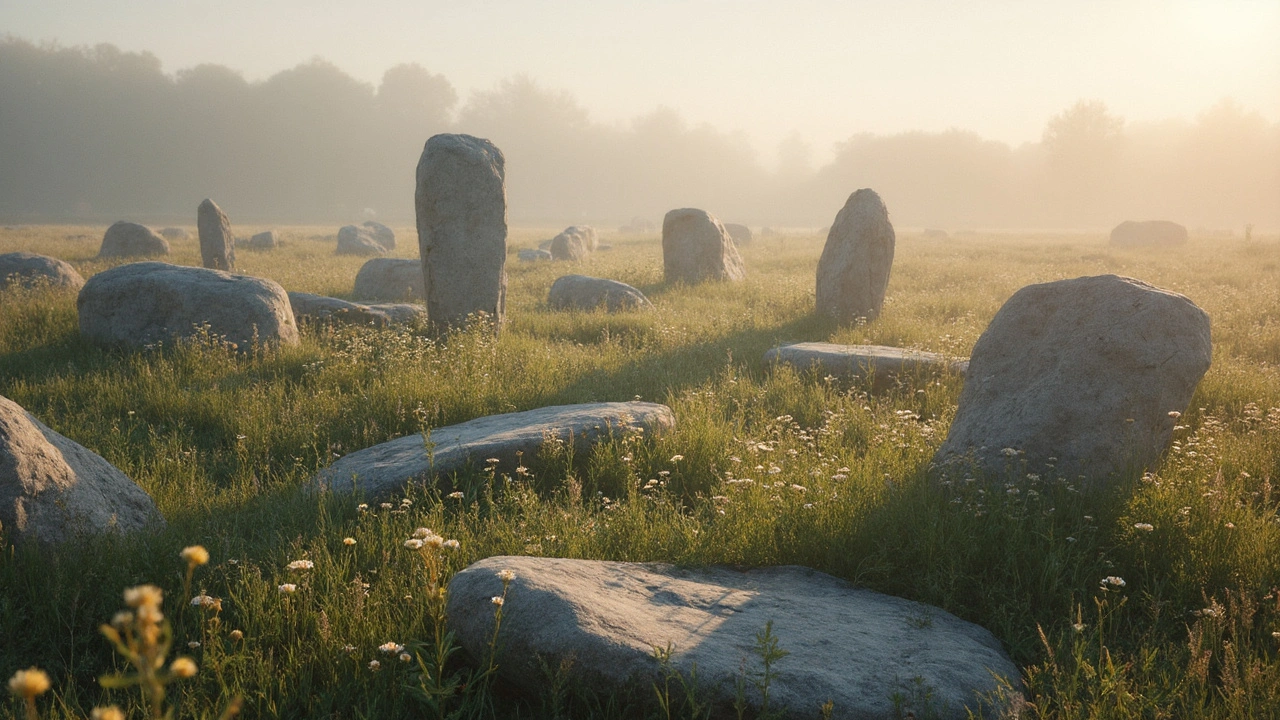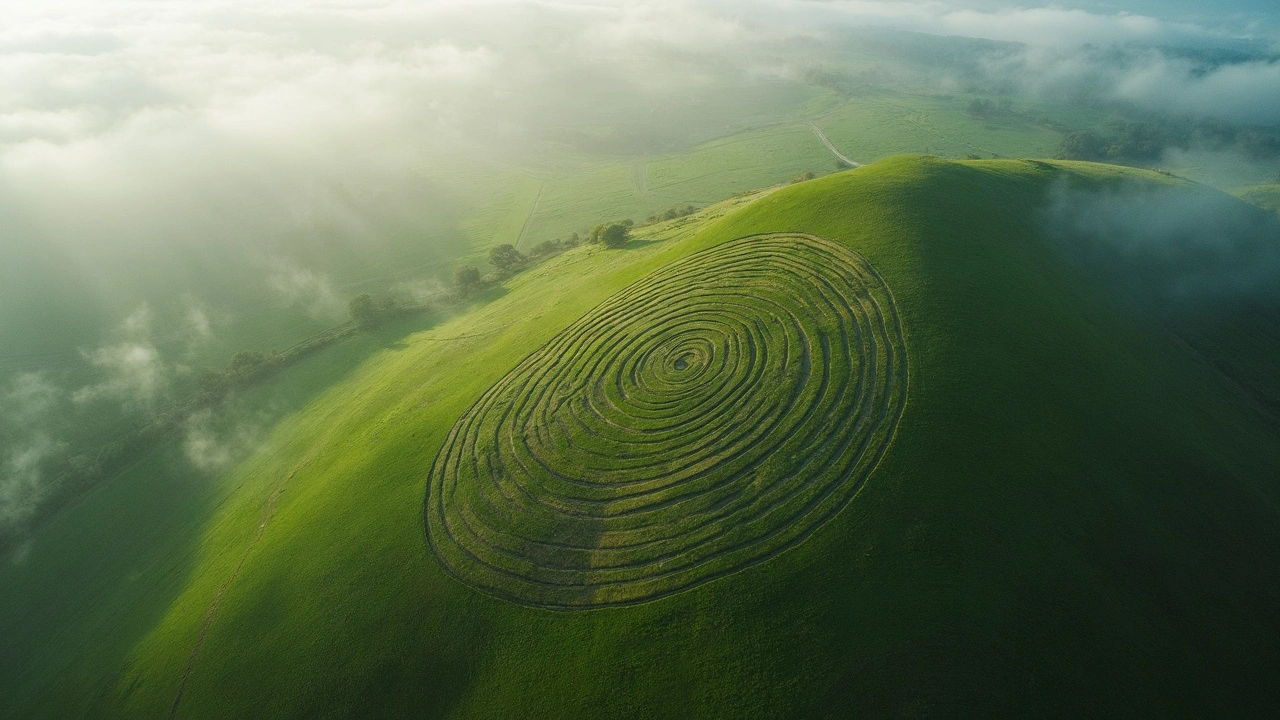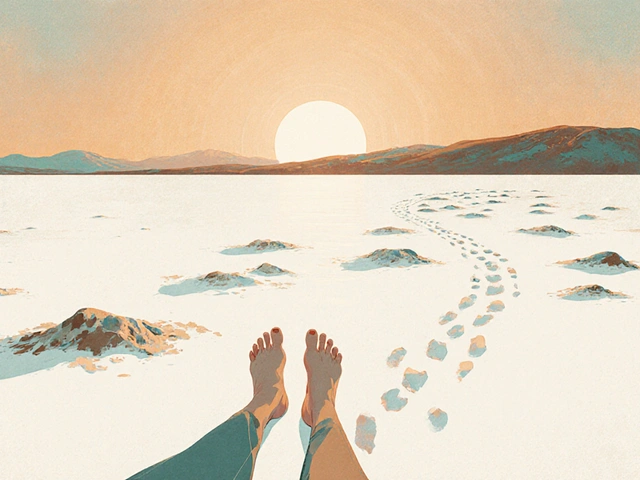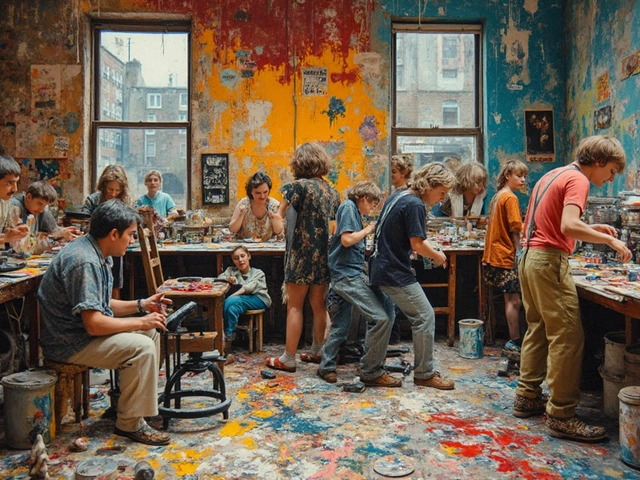Ever walked through a forest and thought, this place is a masterpiece? Well, land art might just validate that feeling. This art movement, which sprouted back in the 1960s, takes art out of the typical gallery walls and plunges it right into nature. It's where creativity meets the earth, literally!
But where did this idea come from? Let's rewind a bit. The birth of land art, or earthworks, was a reaction against the commercialization of art in the '60s. Artists wanted to break free from conventional studio constraints and engage directly with the environment. The land became their canvas, the materials were sand, rocks, wood and sometimes even the wind.
This genre isn't just a feast for the eyes but a call for us to look closer at our surroundings. Not only does it push the boundaries of what we consider 'art', but it also often highlights environmental issues, drawing attention to how we treat our planet.
The Roots of Land Art
The story of land art begins in the late 1960s, a time when artists were hungry for change. Feeling boxed in by conventional art spaces, many were looking for new ways to express their ideas. Enter the vast canvas of the American deserts. These remote and expansive landscapes became the perfect playground for artistic rebellion.
Pioneers of this movement, like Robert Smithson and Nancy Holt, saw potential in the untouched earth. Smithson’s 1970 creation, Spiral Jetty, located in Utah's Great Salt Lake, is one of the most recognizable examples of this art form. This massive spiral made from mud, salt crystals, and rocks literally rose from the land itself, changing with the seasons as the lake's water levels altered its visibility.
While traditional art was often limited to the visual, land art embraced other senses. Michael Heizer's Double Negative involved massive cuts into a Nevada mesa, highlighting the impact of absence rather than presence. It's art that invites you to feel the wind, hear the rustling leaves, and see the shifting shadows.
The land art movement wasn't just about making something pretty in nature. Many artists were inspired by the environmental concerns of the time. They wanted people to think about the relationship between humans and the earth. With a shovel and a vision, they showed us that nature and art could coexist in a way that both honored and questioned our role in the world.
Famous Land Art Pieces
When it comes to land art, some pieces have become iconic, not just for their size but for the way they push the boundaries of what art means. One of the most famous names in this field is Robert Smithson, who crafted the mind-blowing 'Spiral Jetty'. Created in 1970, this piece is basically a 1,500-foot-long coil of rocks and earth, spiraling out into the Great Salt Lake in Utah. It's not just big; it's a commentary on time, nature, and our place within it.
Another legendary project is 'The Lightning Field' by Walter De Maria, completed in 1977. Imagine 400 polished stainless steel poles spread over a mile-long grid in the New Mexico desert. This piece is all about change and perception, as it manipulates light and weather to create a constantly changing experience.
Let's not forget Michael Heizer, whose 'Double Negative' in Nevada is basically a massive cut into the earth. Measuring a whopping 1,500 feet long and 50 feet deep, it challenges viewers to think about what was removed as much as what's still there.
These aren't just art pieces; they're experiences. Engaging with them often involves a trek into nature, making each interaction a unique journey.
- Spiral Jetty - Bolstered by the natural changes in water levels and algae blooms, it changes color and texture over time.
- The Lightning Field - Offers unique visual experiences depending on the time of day, weather, and season.
- Double Negative - Encourages thoughts about absence and the temporality of art.
And hey, these masterpieces aren't just fun for art lovers. They're drawing attention to the environmental challenges we face. Standing in front of one of these gigantic works, it's hard not to feel connected to the planet in a whole new way.

The Impact of Land Art
Land art isn’t just about creating pretty pieces outside. It’s a bold environmental statement, often challenging the way we interact with the natural world. This art form brings awareness to environmental issues, making a strong case for conservation and sustainability. Many land artists are vocal about the need to preserve nature, using their work as a powerful tool for advocacy.
Take, for example, Robert Smithson’s Spiral Jetty. Created in 1970 on the shores of the Great Salt Lake, this piece has become a symbol of the changing landscapes due to environmental factors. Smithson was intentional about choosing a site that experiences natural transformations, making viewers ponder over the effects of time and human impact on our surroundings.
Beyond environmental themes, land art has changed how we perceive art’s physical space. It has redefined what constitutes an art 'gallery'. By creating art directly in nature, artists encourage viewers to go on site-specific pilgrimages, rediscovering the world as both an art gallery and a museum.
The ripple effect of land art has influenced architecture, creating green spaces that merge the built environment with the natural one. Park projects today often incorporate elements of land art, blending urban settings with natural beauty.
Furthermore, academic courses and workshops often now incorporate land art as part of their curriculum, offering students an opportunity to engage with art beyond traditional mediums and spaces.
To sum it up, land art is about more than aesthetics; it's a cultural shift that marries art with ecological advocacy, urging us all to see the world differently and, perhaps, help preserve it for future generations.
Creating Your Own Land Art
Ready to dive into the world of land art yourself? You don't need a degree in fine arts to get started. In fact, part of the beauty of land art is its accessibility. Anyone with a bit of imagination and a willingness to engage with nature can create stunning pieces.
Start by taking a walk in your environment. What materials are available? It could be stones, leaves, or even ice. Remember, part of the charm here is using what nature provides. As land artist Andy Goldsworthy famously said, "I touch the earth with something that was already there."
"Land art allows artists to escape from the galleries and become part of the natural world." - Robert Smithson
Interested in the steps to create your own masterpiece? Follow this simple guide:
- Choose your location: Find a spot that inspires you. It could be a nearby park, beach, or even your backyard.
- Select materials: Collect what the land offers. Try to avoid disturbing the local ecosystem.
- Plan your design: Think about the shape and form you want your piece to take. Sketch it out if that helps.
- Create your art: Start building. Your artwork can be as simplistic or complex as you wish.
- Document your work: Land art is often temporary, so take photographs to preserve your creation.
And for those curious about the impact, here's a little nugget of info. A study in 2020 found that land art projects increased local environmental awareness by 40%. It's clear that intertwining art with nature can lead to meaningful change.
| Artists | Known Works |
|---|---|
| Andy Goldsworthy | Rain Shadows |
| Robert Smithson | Spiral Jetty |
Ready to let nature be your canvas? Get outside, get creative, and most importantly, have fun!




